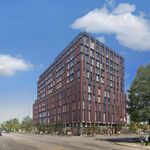dunkalunk
Senior Member
What about Michigan and Indiana? We know Ohio is definitely on board.
A stigma that he earned and deserves. He chose personal benefit over the public, when he should have ethically said - sorry I will not participate in this.
High Speed Rail Canada Symposium SOLD OUT - Tuesday, January 27, 2009
Thanks to the 145 people that pre-registered for the symposium January 31st, in Kitchener. It is sold out.
If a country like Portugal can do it why cant we?
http://www.amblissabon.um.dk/en/men...heder/SidsteNyt/PortoVigoTGVRailLinkABoom.htm
http://www.the-news.net/cgi-bin/article.pl?id=962-25
http://www.o-keating.com/hsr/tgv.htm
because Canada fails....
If a country like Portugal can do it why cant we?

A corridor going from Kingston to Ottawa to Montreal would add 70 km or so to the trip, not a whole lot considering it adds a market of a million people and the speeds involved. European HSR lines zigzag all the time to hit major cities. The only significant population centres that route would miss are Brockville and Cornwall, which have 98,000 people combined and are already served by VIA.One of the segments which was presented at the recent high speed rail symposium in Kitchener was the fact that other high speed rail systems in the world were not built as one peice, but in an incremental approach. Even the TGV was built starting on a spine connecting Lyon to Paris. Even though it may have connected two cities, it dramatically sped up rail travel for the rest of France because that 2 hours was cut off from all other journeys who used that corridor.
However, in Canada, that spine between Montreal and Toronto is hard to identify as we have a city with a population of Million sitting just to the north of it while we have a lake and river shore with a fairly significant population of its own to the south. While, it would be foolish to leave out our national capital region, it would also be a loss to leave out those communities on the lakeshore.
What also complicates the situation is that between Kingston and the National Capital Region there is a ridiculous amount of lakes carved out of rocks which would be incredibly expensive to blow a straight line through with very little population to serve between them (which is why i think MP Del Mastro is insane if he thinks high speed rail is going through his Peterborough riding).






